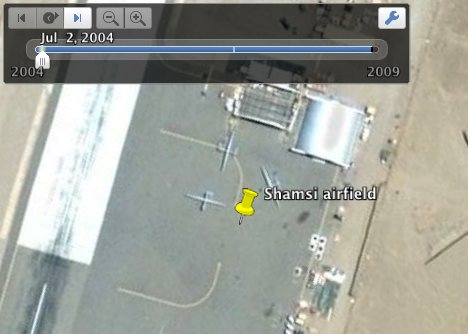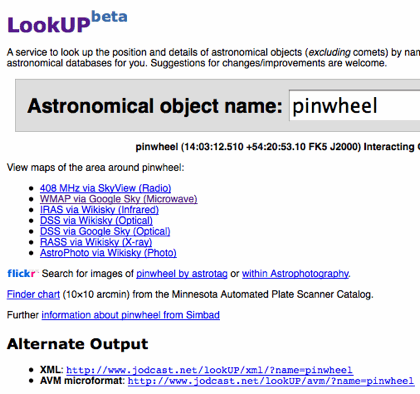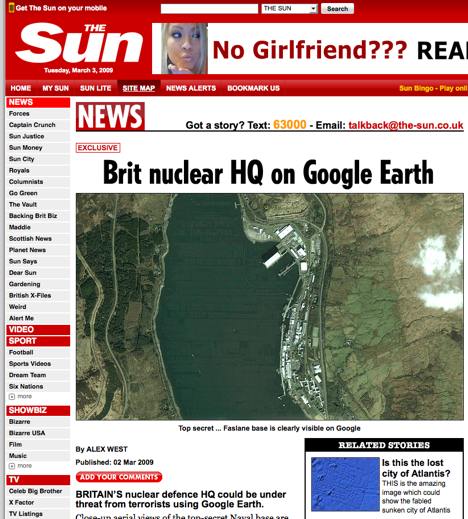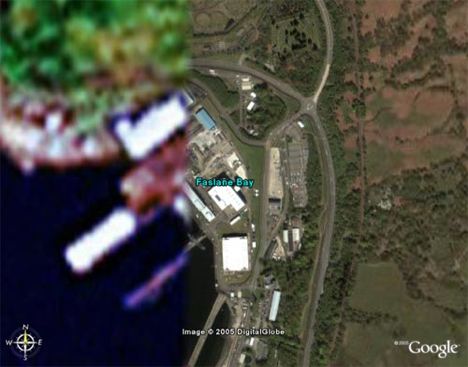Banning the hard-earned freedoms of modern civilization is just about the worst possible way of preventing some people from abusing these freedoms for evil. And yet San Diego Assemblyman Joel Anderson is attempting to do just that, by introducing a bill that would make it illegal in California to post images of public buildings online. Writes the Mercury News:
His bill would restrict the images such Web sites could post online. Clear, detailed images of schools, hospitals, churches and all government buildings—what he calls soft terrorism targets—would not be allowed.
“All I’m trying to do is stop terrorists,” said Anderson, of El Cajon. “I don’t want California to be helping map out future targets for terrorists.”
[…] Anderson said he got the idea after reading news reports that terrorists had used online satellite images to plan the November bombings in Mumbai, India.
Of course, once these images are no longer available online, California will have to ban all those terrorists potential terrorists people from taking photos of these places from pavements, out of cars, from the terraces of tall buildings, and out of airplane windows, to make sure the law is effective. And certainly no posting of those images on blogs. Which would make California sound a lot like Egypt, or Russia, or China.
As for the rest of the article — here is the obligatory fact-checking:
Google and Microsoft voluntarily limit online images to some extent. The White House, the U.S. Capitol and military bases are found on Internet maps but cannot be viewed as clearly as the buildings on the streets that surround them.
That first sentence is correct (for example, Street View imagery is removed after requests by individuals on privacy grounds) but the Washington example is not a good one: Google uses slightly grainier imagery of the White House and Capitol because that is the best uncensored imagery available for licensing of those areas — there is no choice for Google to make. Nor does Google voluntarily degrade imagery of military bases (except for once, in post-invasion Iraq, where it replaced newer high-resolution imagery with older pre-war high-resolution imagery). Military bases of the US and other countries are visible in Google Earth in as high a resolution as Google can get its hands on. (Sometimes Google has to choose between available already-censored aerial imagery and uncensored satellite imagery, but the new archive feature in Google Earth 5 will likely make that choice unnecessary.)
Detailed Israeli street images were removed by Google Earth after the government there raised concerns that Hamas used online satellite photos to aim rockets.
That sentence was the first time I had heard such a claim. Israel and the Palestinian Territories have always had 2.5m-resolution imagery in Google Earth, and still do. Might some data have been added and subsequently removed?
A bit of Googling later, I had the likely answer, on the Official Google Maps API For Flash Google Group. A developer asks:
We used google maps in our flex [Flash] application, and up until a week ago or so (I did not check it daily) I could see detailed maps. I saw city streets, and street names even in Hebrew. […] Today when I enter in the same application “Israel”, I get a map with just major cities and roads. I saw in the Excel sheet that Israel is only covered for major cities and roads, except that up until a week ago this was not the case. Can you reverse your decision, or provide us with an explanation….
To this, a Google employee answers:
Unfortunately, there was a bug in our code that caused the high-resolution Israel data to be available in the Flash API. This thread discovered it [On December 15, 2008]. We’ve since fixed the bug so that Israel data is no longer exposed in the API. We do not have the license to provide this to users of the API at this time. Our apologies to the developers out there, like you, who were misled into believing the API had legal access to the full Israel data.
I have no idea where the Mercury News got the idea from that this data was removed at the behest of the Israeli government on terrorism grounds, but since the article neglects to source that claim, we may never know. It certainly makes no sense, because street map data is far less revealing than satellite imagery, and you can buy detailed street maps of Israel in any good map store on Earth. (There was an episode in October 2007 where Hamas boasted about using Google Earth, but it never resulted in data being removed.)





